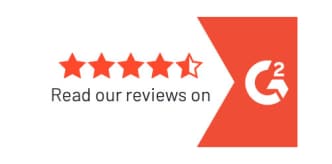You’re probably excited to embark on becoming a 401(k) plan sponsor, and that makes sense, because a 401(k) is not only a great benefit for your company and your employees, but it’s also a big step for a small business, bringing greater respect and helping to cement its place in the community. It’s true you have a lot to think about at this time, but don’t forget an important part of 401(k) sponsorship: answering employee questions.
Because have been in the business for a while now, we have come to learn the types of questions employees often ask employers about their 401(k) program. We’ll save you some time by providing you with both the questions and the answers below.
1. Do You Offer a Company Match?
This is the $64,000 question (adjusted for today’s inflation, it’s the $722,560 question). It’s what employees want to know above all else. The reason is obvious — a company match is free money. And depending on how much it is, it could serve as a considerable boost to their compensation package.
If you are just now considering adding a 401(k) plan at your company, you may think you can’t afford a company match. But we urge you to ask yourself — can you afford not to offer a company match?
Companies that offer 401(k) matching funds are considered by employees vastly superior to those that don’t. Not providing a company match means you likely won’t get the best choice of employees. That’s hard to measure monetarily, but many companies opt to save money by choosing a Safe Harbor 401(k) plan, because this type of plan means they don’t have to conduct federally mandated (expensive) audits of their program. The catch? You must offer a match. The purpose of the audits is mostly to make sure you’re treating employees fairly, and the IRS will let you off the hook if you promise to contribute to your workers’ 401(k) accounts.
So let’s say for the sake of argument that you’re offering a match — whether it’s because it’s the right thing to do or because someone made you. It’s important to make sure your employees understand how the match works. Not all matches are created equal. Are you matching 100% up to 3%? Fifty percent up to 6%? Other percentages? Make sure everyone knows what it is and show an example of how it works (Emma contributes 3% of her salary per week ($50) and the company matches it at 50%, so her account grows by $75 per week. That’s $1,300 a year in free money!)
2. Are There Investment Options?
While there are people who become overwhelmed by too many options, most people want some options. This is what makes some state-mandated 401(k) plans undesirable — there aren’t enough options. But with 401GO, your employees will have options — more than 100 options, in fact. And they won’t have to worry about how to make choices if they’re unsure, because 401GO provides a custom portfolio builder. When employees opt to use this tool, they will answer a few questions such as when their prospective retirement year is and what their risk tolerance is — low, medium or high — and the portfolio builder will take it from there. It takes only minutes.
Some employees will want more control over their choices for investments, however. That’s no problem — they can skip the portfolio builder and move right to choosing their own equity, sector and target date funds as well as bonds. They have the option to monitor them as well and change them anytime they aren’t performing the way they had hoped.
3. When Do I Become Vested?
Plenty of employees will never ask this question because they don’t know what vesting is. A responsible employer will explain it to them regardless.
It’s important for employees to understand if the money you are putting into their account isn’t really theirs yet. It’s important not just because you don’t want to mislead your employees, and therefore risk possibly disappointing or even angering them, but also because many employers use vesting as a means to keep employees around longer than they might otherwise stay. As an employer, you may ask yourself why you would want employees who can only be convinced to stay if you dangle a carrot like graded vesting in front of them. There could be many reasons. If you’re finding it hard to keep employees, you may want to look at your employer/employee relationships, but on the whole, it’s not unusual for employees to jump ship — especially if your competitors are courting them. A vesting schedule can help convince them to stay put and find out what’s so great about your company.
On the other hand, many employees will see a graded vesting schedule like the reward chart their parents had on the fridge for them when they were little, where they’d get to put a sticker on each day they remembered to brush their teeth without being told, and at the end of a specified time period, they would get a prize. This works even less well with adults. Additionally, if you choose a Safe Harbor plan, you are required to offer immediate vesting.
4. When Can I Withdraw Money?
In most cases, you have to be at least 59½ years old to start withdrawing money from your 401(k) without penalty (a 10% tax). But there are some exceptions. For instance, if you retire from your job at 55, you may begin drawing on your retirement funds without penalty. You may also withdraw funds without penalty for emergencies, such as if you become permanently disabled, if you want to pay medical bills that are not reimbursed by your insurance that total more than 10% of your adjusted gross income, if you’re unemployed for at least 12 weeks and need the money to pay health insurance premiums or if you owe so much in back taxes that the IRS puts a lien on your 401(k). You might also be able to withdraw money to purchase your first home, complete qualifying home repairs or adopt a child. The money can also be taken out penalty-free if you die, but you don’t get it, your beneficiaries do.
New exceptions as outlined in Secure 2.0 include exceptions for those with a terminal illness, victims of domestic violence and those affected by a federal disaster. Retirement accountholders with an unspecified emergency can withdraw up to $1,000 once in a three-year period, but must pay the money back.
Your employees may have other questions as well — consider connecting with a financial advisor to help you with all the details of becoming a 401(k) sponsor.



